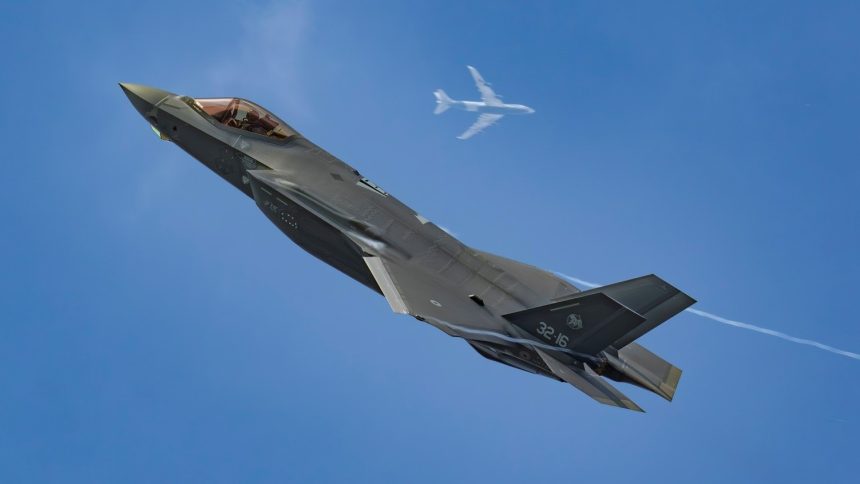The Italian Air Force deployed four F-35A Lightning II to Ämari Air Base in Estonia, leading NATO’s latest Baltic Air Policing mission.
The Italian Air Force deployed four F-35A Lightning IIs to Ämari Air Base in Estonia. This marked the beginning of a critical rotation for NATO’s Baltic Air Policing mission, and the second time Italy sent its fifth-generation fighters to guard the skies over the Baltic Region.
A handover ceremony on Aug. 1, 2025, marked the formal transfer of responsibility from the Portuguese Air Force to the Italian Air Force, officially launching Operation Baltic Eagle III. For the next four months, Italian F-35As will safeguard the airspace of Estonia, Latvia, and Lithuania, operating under NATO command and on Quick Reaction Alert (QRA) status. The Italian national contingent is under the command of Colonel Gaetano Farina, a seasoned officer and former commander of the Italian Air Force’s National Aerobatic Team, the Frecce Tricolori.
For the first time two 🇮🇹 F-35s scramble from 🇪🇪 in response to 🇷🇺 aircraft under NATO’s Air Policing mission
The 🇮🇹 Task Force Air – 32nd Wing detachment at Ämari Air Base 🇪🇪 are on Quick Reaction Alert 24/7 demonstrating the Alliance’s commitment to safeguarding NATO airspace pic.twitter.com/pnM0CRowo1
— NATO Air Command (@NATO_AIRCOM) August 13, 2025
Shortly after assuming the mission, on Aug. 13, the Italian detachment successfully conducted the first Alpha Scramble in response to unidentified aircraft approaching NATO airspace. The F-35s launched rapidly from Ämari, intercepted, and performed visual identification of the aircraft, demonstrating both their readiness and the strategic value of fifth-generation capabilities in securing the Alliance’s eastern flank.
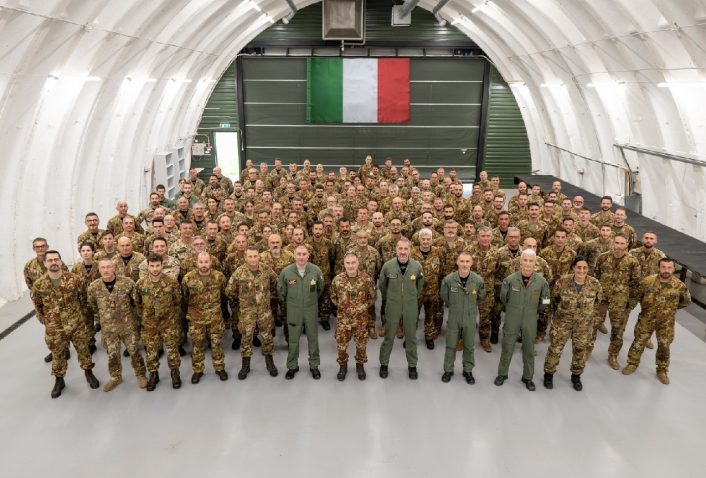
The scramble was triggered by the detection of multiple Russian aircraft, including a Su-24MR Fencer-E and a Su-33 Flanker-D. Specifically, the aircraft were identified as the Su-24MR serial RF-33780 with bort number 33 white assigned to the Russian Navy’s Baltic Fleet’s 4th Mixed Aviation Regiment (SAP) and the Su-33 serial RF-33701 with bort number 79 red belonging to the Russian Navy’s Northern Fleet 279th Independent Shipborne Fighter Aviation Regiment (OKIAP).
Although the quality of the image is not ideal, the Su-33 can be visually identified thanks the distinctive “Siberian Tiger” tail marking, an emblem unique to the 279th OKIAP, and its livery. However, it can be noted on both the Su-33 and Su-24 that the Russian Navy’s flag has been removed, which points to the possibility of the two units being transferred from the Navy to the Air Force, as happened last year to the 689th Guards Fighter Aviation Regiment, equipped with Su-27s.
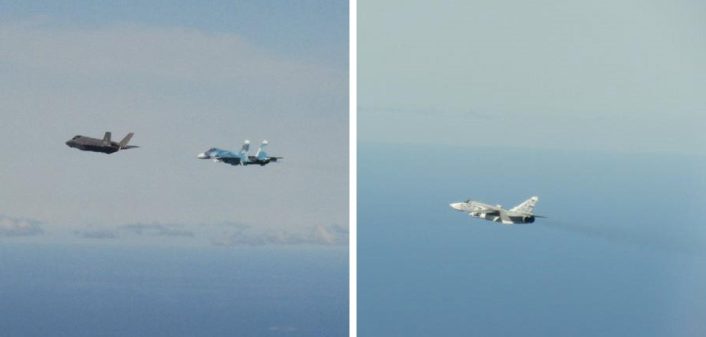
Task Force Air – 32nd Wing to Participate in Baltic Eagle III
The four Italian F-35A aircraft arrived at Ämari Air Base on Jul. 25, 2025. Their deployment was publicly trackable on aviation monitoring websites such as AirNav RadarBox, where enthusiasts and analysts could observe the planned transit and arrival of the aircraft.
The unit currently deployed to Ämari Air Base in Estonia is designated as Task Force Air – 32nd Wing. It comprises aircraft and mission-essential personnel drawn from the 32nd Wing, stationed at Amendola Air Base, as well as a support and operations contingent from the 6th Wing, based at Ghedi Air Base.
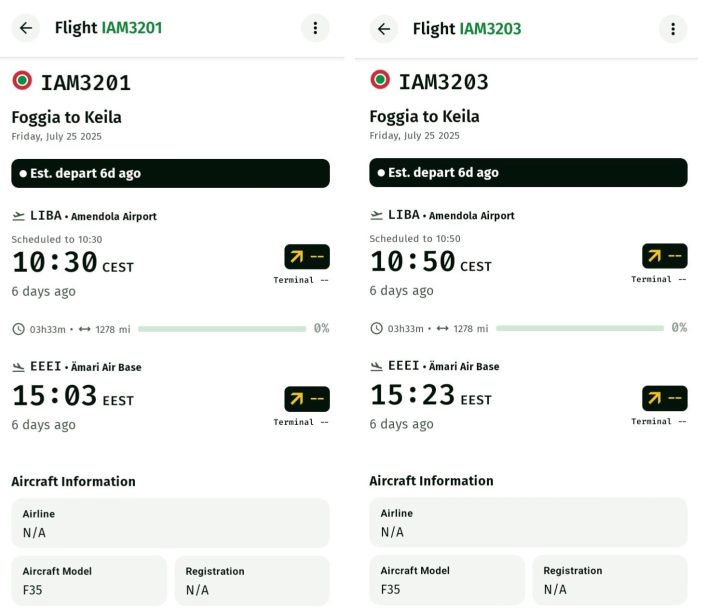
Operating under the tactical control of NATO’s Combined Air Operations Centre (CAOC) Uedem, Task Force Air – 32nd Wing is responsible for executing Baltic Air Policing (BAP) missions, maintaining 24/7 readiness to launch intercepts, identify unidentified aircraft, and ensure the integrity of Allied airspace along NATO’s eastern flank.
On 1 August, a ceremonial handover of the Baltic Air Policing mission took place at Ämari Air Base. The Portuguese Air Force formally transferred the mission to the Italian Air Force. Italy will now safeguarding the Baltic region’s airspace with their F-35 fighter jets. pic.twitter.com/FLsVTscbBq
— Estonian Defence Forces | Eesti Kaitsevägi (@Kaitsevagi) August 6, 2025
Beyond Air Policing, the Task Force regularly conducts daily training activities across the Baltic region to maintain operational readiness and tactical proficiency. These include complex missions such as joint exercises with ground forces, and interoperability drills alongside other NATO allies. In previous Italian deployments, CAS (Close Air Support) missions were also conducted using available training areas like the Tapa Range in Estonia.
Some of the abovementioned missions can be passively tracked by aviation observers through platforms like AirNav RadarBox. Training sorties often use the callsign “GHOSTxx”, while aircraft assigned to NATO’s Quick Reaction Alert (QRA) role at Ämari Air Base operate under the standard callsign “EIxx”. While flight tracking data is limited due to operational security, the use of these identifiers offers a glimpse into the day-to-day activity and high readiness posture maintained by the Italian detachment.
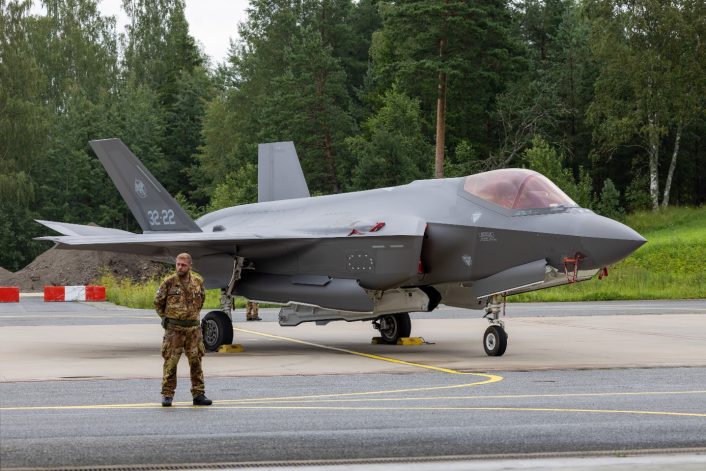
What is the NATO Air Policing Mission?
As a defensive alliance, NATO remains firmly committed to protecting the airspace of its member nations against potential aerial threats. This responsibility is fulfilled through the NATO Air Policing mission, which operates 24 hours a day, 365 days a year.
Originally established in 1961 during the Cold War, the mission has evolved to meet the demands of the modern security environment. Today, it is supported by the NATO Integrated Air and Missile Defense System (NATINAMDS), a comprehensive, layered network that brings together radar sensors, aircraft, and missile defense systems to protect NATO territory both in times of peace and during crises or conflict.
At the heart of NATO’s Air Policing structure is the Allied Air Command (AIRCOM), based in Ramstein, Germany. AIRCOM provides overall command and control of the mission, directing operations through two Combined Air Operations Centers (CAOCs):
- CAOC Uedem in Germany, which oversees the airspace over Northern Europe.
- CAOC Torrejón in Spain, responsible for the skies over Southern Europe, including the Mediterranean region.
These centers work in close coordination with Control and Reporting Centers (CRCs) and Quick Reaction Alert (QRA) units, ensuring that NATO forces are always ready to detect, identify, and if necessary, intercept unidentified or potentially hostile aircraft.
Because not all NATO members have the resources to conduct Air Policing on their own, the Alliance relies on a spirit of collective support. Member nations with suitable air assets regularly contribute to Air Policing missions in regions where Allies lack the capability, either by deploying nationally or as part of multinational detachments.
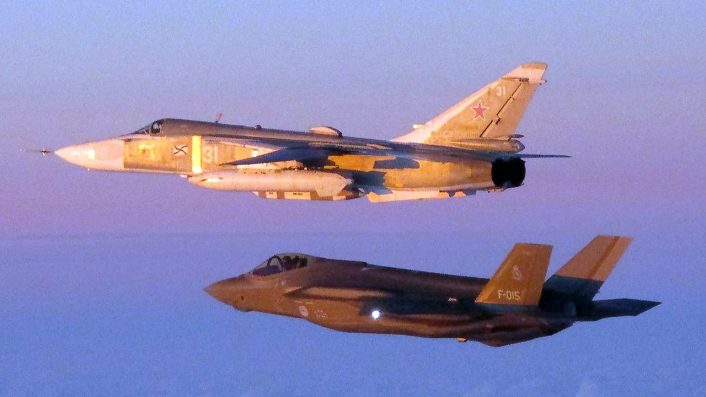
Understanding the Baltic Air Policing Mission
Baltic Air Policing (BAP) is a NATO mission dedicated to safeguarding the airspace over Estonia, Latvia, and Lithuania, three countries that joined the Alliance in 2004. Since these nations do not have their own air combat fleets, NATO established BAP as a continuous rotational deployment to ensure their skies remain secure at all times.
Under this mission, NATO allies take turns sending fighter jets and support personnel to the region for rotations lasting about four months. These forces operate primarily from two main bases: Šiauliai Air Base in Lithuania and Ämari Air Base in Estonia. The deployed aircraft are placed on Quick Reaction Alert (QRA), standing ready to launch within minutes to intercept, identify, or escort any unknown or unauthorized aircraft approaching Baltic airspace. This presence serves not only as a deterrent but also as a tangible demonstration of NATO’s commitment to the defense of its eastern members.
A critical component supporting BAP is BALTNET, the Baltic Air Surveillance Network. Operated jointly by Estonia, Latvia, and Lithuania, BALTNET links radar stations and Control and Reporting Centers (CRCs) across the three countries. This network enables rapid sharing of radar data, providing a clear, real-time picture of all air activity within the region.
BALTNET’s main CRCs include CRC Tallinn, Callsign “Lighthouse,” located in Estonia; CRC Lielvārde, Callsign “Amberland,” located in Latvia; and CRC Karmėlava, Callsign “Galaxy,” located in Lithuania. These centres operate 24/7, tracking and identifying aircraft to detect any unusual or potentially threatening activity as early as possible.
Since the Baltic States have limited air defense resources on their own, BALTNET plays a vital role in enabling NATO’s Baltic Air Policing mission. By continuously sharing surveillance information and coordinating with NATO’s command structures, including the Combined Air Operations Centre (CAOC) in Uedem, Germany, BALTNET ensures fighter jets can be scrambled quickly and effectively when needed. This close cooperation strengthens the collective defense of the region and forms an essential part of NATO’s Integrated Air and Missile Defense System (NATINAMDS), keeping the Baltic skies safe 24/7.
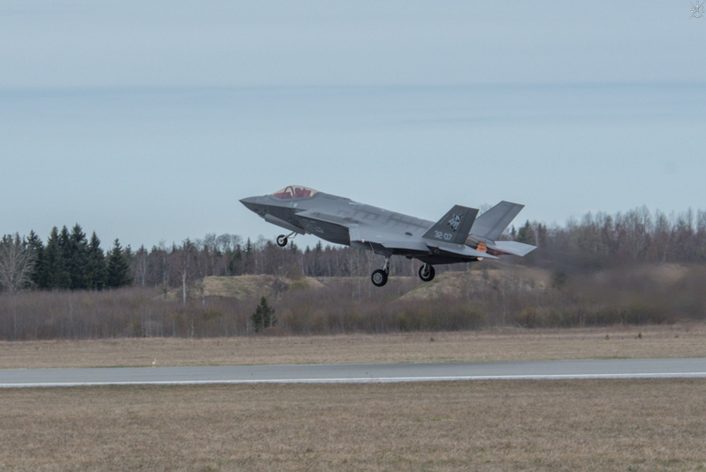
The Flow of an Air Interception
When suspicious activity is detected, the NATO Combined Air Operations Centre (CAOC) may decide to investigate by scrambling armed fighter jets. These aircraft are kept on Quick Reaction Alert (QRA) status at over 32 NATO airbases across the Alliance. Depending on the urgency, the jets can be airborne within 15 minutes or less.
Once in the air, QRA pilots are guided by controllers at the nearest Control and Reporting Centre (CRC) to intercept and visually identify the aircraft in question. During these missions, pilots face a range of scenarios—from foreign military aircraft entering NATO airspace without authorization to civilian planes experiencing emergencies.
After completing the mission, the fighters return to their base, ready to respond again if needed. However, sometimes it could also happen that the aircraft are retasked while infight for a second intercept, and multiple identifications are conducted during the same scramble.

